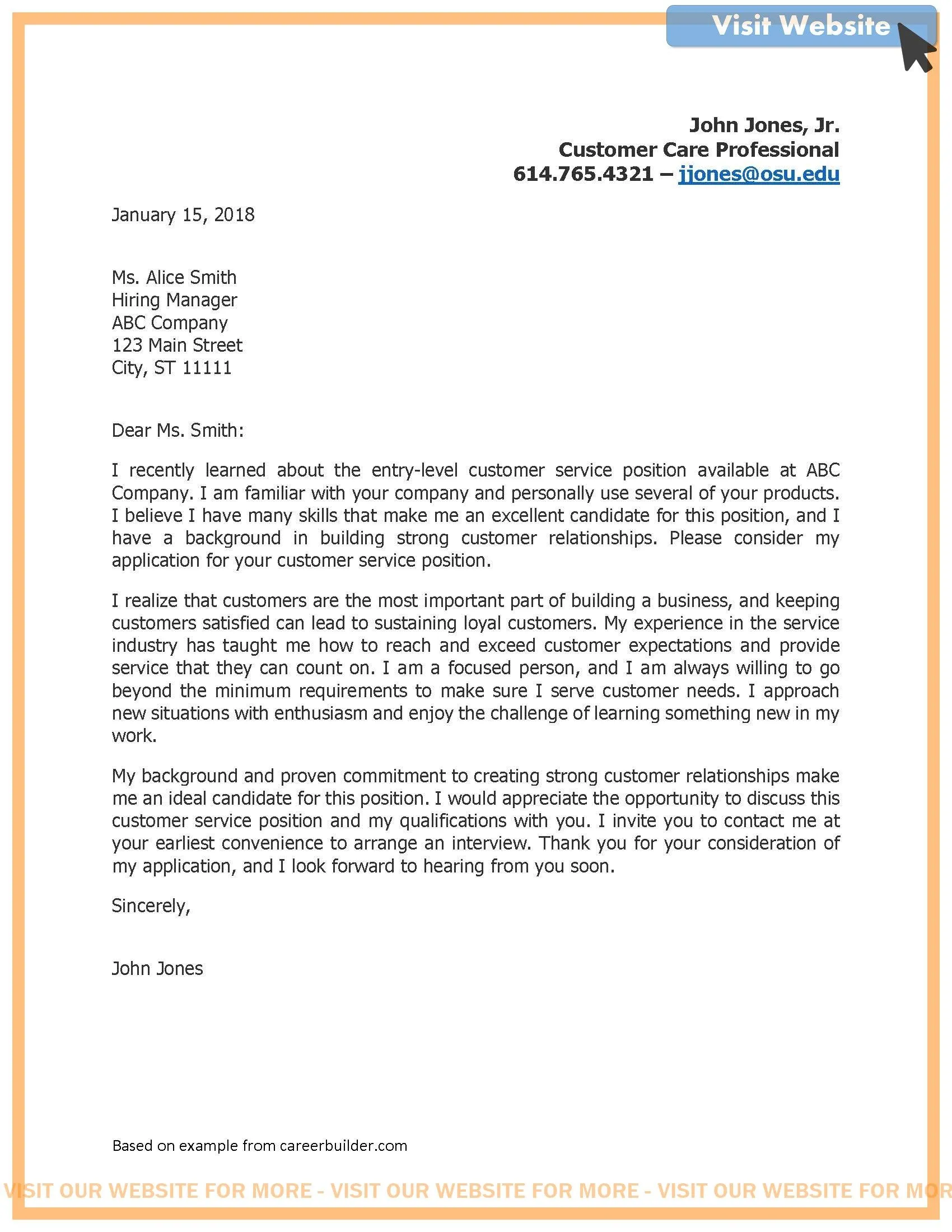Understanding the EMT Cover Letter Importance
An EMT cover letter is far more than just a formality it is your first impression. In a competitive job market, especially for those with limited experience, a well-crafted cover letter can be the deciding factor in whether your application is considered. It’s your opportunity to showcase your personality, enthusiasm, and suitability for the role, setting you apart from other applicants. Even if you lack direct experience, the cover letter allows you to demonstrate your understanding of the EMT profession and your commitment to patient care. A strong cover letter highlights your strengths, addresses any potential weaknesses (like lack of experience), and convinces the hiring manager that you are a promising candidate.
Why is an EMT Cover Letter Essential
The cover letter is a crucial component because it allows you to personalize your application. Generic resumes can often get lost in the shuffle, but a cover letter allows you to address the specific requirements of the job and demonstrate your understanding of the organization’s values. It also provides a space to explain any gaps in your experience or to elaborate on your skills and qualifications. For example, if you have volunteered or taken relevant coursework, the cover letter is where you can highlight these experiences and how they relate to the EMT role. Moreover, it offers a chance to show your personality and passion for helping others, qualities that are vital in emergency medical services.
Key Components of a Powerful Cover Letter
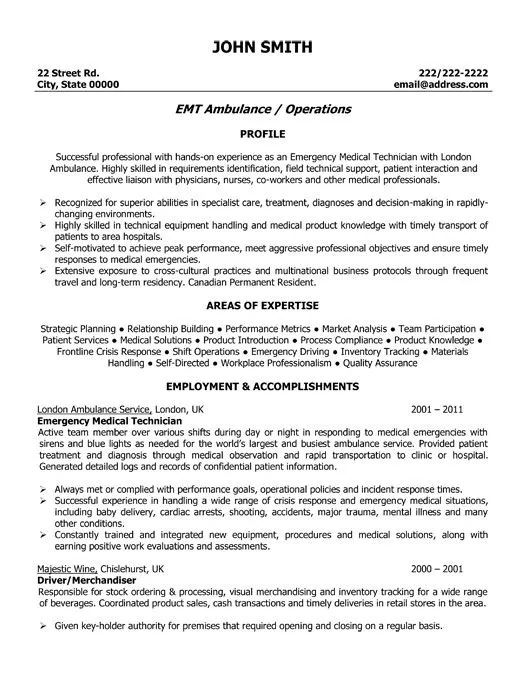
A powerful cover letter is concise, focused, and tailored to the specific job. It should begin with your contact information and the date, followed by the hiring manager’s name (if you can find it), and a professional salutation. The opening paragraph should grab the reader’s attention and state your interest in the position. In the body of the letter, highlight your relevant skills, training, and any transferable skills from other experiences. Conclude by expressing your enthusiasm for the opportunity, reiterating your interest, and including a call to action, such as your availability for an interview. Proofread meticulously before submitting.
Building a Strong EMT Cover Letter
Contact Information and Date
Start your cover letter with your full name, address, phone number, and email address. Ensure the information is accurate and professional. Below your contact information, include the date you are writing the letter. This simple yet crucial step ensures the employer knows when you applied and how to reach you. Make sure your email address is professional and not something that could negatively impact your application. Double-check that your phone number is correct and that your voicemail is set up properly, as potential employers may try to contact you quickly.
Addressing the Hiring Manager

Whenever possible, address the hiring manager by name. Research the company and try to find out who is responsible for reviewing applications. A personalized greeting, such as “Dear Mr./Ms. [Last Name],” demonstrates that you have taken the time to research the company and are genuinely interested in the position. If you are unable to find the hiring manager’s name, a general salutation such as “Dear Hiring Manager” is acceptable but less impactful. Addressing the right person immediately signals that you are serious and that you care about the details. If you cannot find a specific name online, consider calling the company to inquire.
The Opening Paragraph Grab Their Attention
Your opening paragraph is critical for grabbing the reader’s attention. Clearly state the position you are applying for and where you saw the advertisement. Briefly mention why you are interested in the role and what makes you a suitable candidate. Avoid generic phrases; instead, focus on showcasing your passion for emergency medical services. A strong opening paragraph sets the tone for the rest of your letter and encourages the hiring manager to continue reading. For example, you could begin by expressing your enthusiasm for the opportunity to serve the community and your dedication to providing excellent patient care.
Highlighting Skills and Attributes
Emphasize Transferable Skills
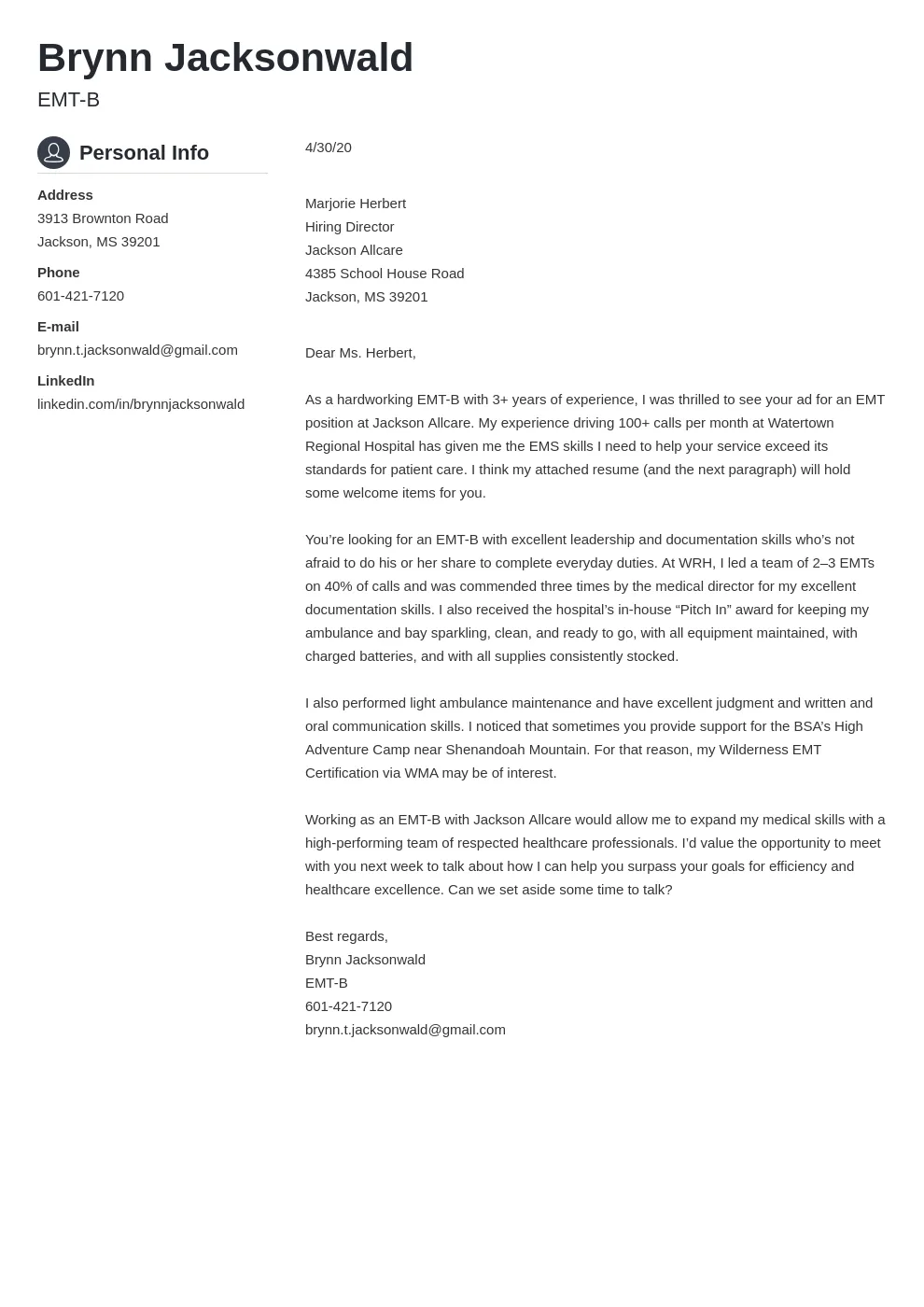
Even without direct EMT experience, you possess transferable skills from other areas of your life, such as customer service, volunteer work, or previous employment. Highlight skills like communication, teamwork, problem-solving, and critical thinking. Provide specific examples of how you’ve demonstrated these skills. For example, if you have customer service experience, you can mention how you handled difficult situations and provided support to those in need. If you have volunteered, describe your role and how you contributed to the team. These examples prove that you can translate your skills into an EMT environment.
Showcase Relevant Coursework or Training
If you have completed any relevant coursework, such as first aid, CPR, or advanced medical training, make sure to mention it. Describe the skills and knowledge you gained and how they relate to the EMT role. Even if you lack professional experience, showcasing your commitment to learning and development can demonstrate your eagerness to excel. For example, you might mention the specific modules you enjoyed or the hands-on training you received. If you’re currently enrolled in an EMT program, mention that as well, and include the anticipated completion date. This demonstrates your proactive approach to your career.
Focus on Soft Skills
Soft skills, such as empathy, communication, and the ability to remain calm under pressure, are essential for EMTs. Highlight your soft skills and provide examples of how you have utilized them. Describe situations where you demonstrated these skills, such as when you were part of a team, resolved a conflict, or communicated effectively in a stressful situation. Explain how you maintain composure and focus during critical moments. Remember that an EMT is required to interact with patients in distress, and showcasing your ability to connect and provide support will be highly valued by potential employers. Consider any leadership roles you have had and how you adapted to those roles.
Demonstrating Passion and Enthusiasm

Expressing Your Interest in the Position
Express your genuine interest in the position and the organization. Explain why you are drawn to the company and what aspects of the role excite you. Do some research about the organization and mention something specific that appeals to you, such as their mission, values, or reputation. This demonstrates that you have put effort into your application and are genuinely interested in working with them. Showing that you understand the role of an EMT and how you can contribute to the well-being of others is crucial.
Highlighting Your Understanding of the Role
Demonstrate your understanding of the EMT role and the challenges it entails. Discuss your knowledge of emergency medical procedures and protocols. Show that you understand the importance of patient care and how to handle different medical emergencies. Acknowledge the demanding nature of the job, including long hours, high-pressure situations, and the need for quick thinking. Convey your understanding that being an EMT requires continuous learning and a commitment to providing the best possible care in the face of adversity.
Mentioning Relevant Certifications
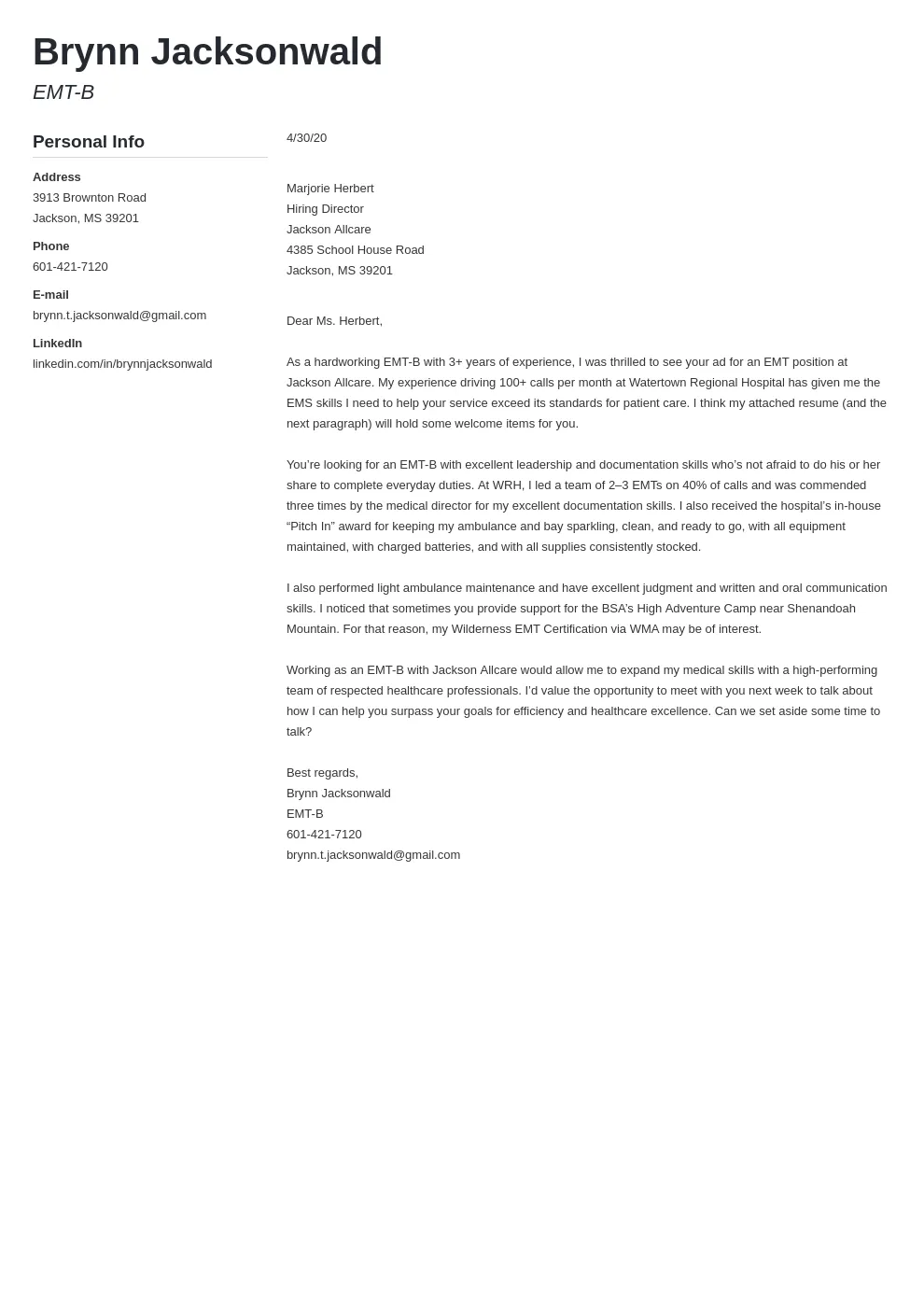
If you have any relevant certifications, such as CPR, first aid, or other medical training, be sure to mention them. Include the name of the certification, the issuing organization, and the date it was obtained. This demonstrates your commitment to professional development and your willingness to meet the necessary requirements of the job. Mention any certifications that are required for the position or that would be beneficial to the employer. Your certifications are a tangible demonstration of your abilities and commitment to the profession.
Closing Your EMT Cover Letter
Expressing Gratitude and Offering Availability
In your closing paragraph, express your gratitude for the hiring manager’s time and consideration. Reiterate your enthusiasm for the opportunity and your commitment to the role. Mention your availability for an interview and how the hiring manager can contact you. Keep the tone professional and enthusiastic. Thank the hiring manager for the opportunity to be considered for the role and include your contact information. Ensure that your eagerness to discuss your qualifications further shines through.
Formal Closing and Signature
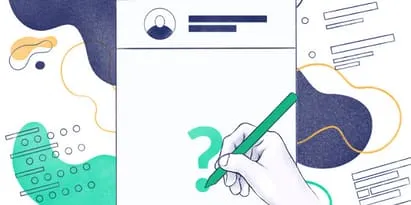
Use a formal closing such as “Sincerely,” “Respectfully,” or “Thank you.” Leave space for your handwritten signature if submitting a physical copy. If submitting electronically, type your name below the closing. Make sure to include your name clearly. The signature adds a personal touch to your cover letter and reinforces your professionalism. Remember to ensure the letter is free of grammatical errors and typos before submitting.
Common Mistakes to Avoid
Grammatical Errors and Typos
Grammatical errors and typos can undermine your credibility. Proofread your cover letter carefully before submitting it. Use spell-check and grammar-check tools, but don’t rely on them completely. Have a friend or family member review your letter for any errors you might have missed. These errors make a bad first impression and suggest a lack of attention to detail. A cover letter littered with mistakes suggests you might also make mistakes in a high-pressure environment. It could be the determining factor in whether the hiring manager considers you for the role.
Generic or Vague Language
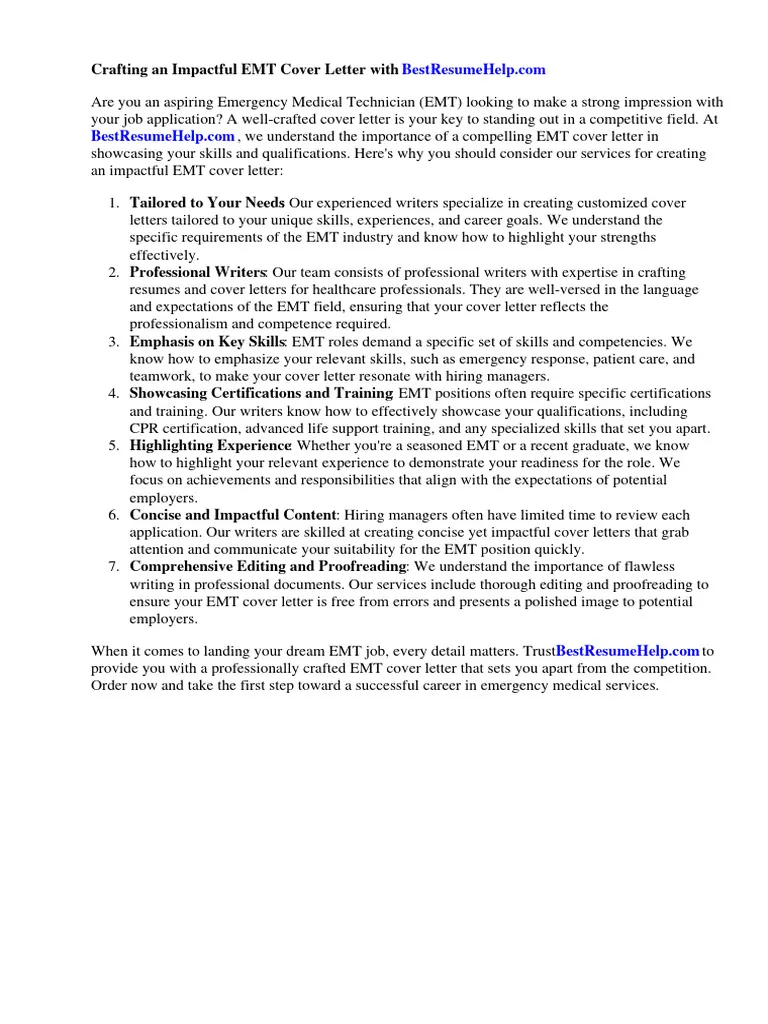
Avoid using generic or vague language that could apply to any job. Tailor your cover letter to the specific requirements of the EMT position and the organization you are applying to. Use specific examples to illustrate your skills and experiences. Generic language makes it difficult for the hiring manager to see you as a good fit for the role. Instead, use action verbs, quantifying your achievements whenever possible. Show your understanding of the role and the challenges it presents.
Focusing Too Much on Lack of Experience
While it’s important to acknowledge your lack of experience, avoid dwelling on it. Focus on your transferable skills, relevant training, and your enthusiasm for the role. Frame your lack of experience positively by highlighting your eagerness to learn and your willingness to take on new challenges. Don’t make the lack of experience the central theme of your letter. Instead, make it one small point while emphasizing your transferable skills and enthusiasm. Focus on your passion for the field and your commitment to providing excellent patient care.
Finalizing and Submitting Your Cover Letter
Proofreading and Editing
Before submitting your cover letter, proofread it carefully for any errors. Check for typos, grammatical errors, and any inconsistencies in your formatting. Read your cover letter aloud to catch any awkward phrasing or sentences. It is important to ensure the cover letter is free from mistakes. Ask a friend or family member to review it. Proofreading is one of the most crucial steps in the application process, because it demonstrates attention to detail.
Formatting and Presentation
Ensure your cover letter is well-formatted and easy to read. Use a professional font, such as Times New Roman or Arial, and maintain consistent formatting throughout the document. Use clear and concise language, and avoid using jargon or overly complex sentence structures. The cover letter should be visually appealing and easy to scan. Use bullet points, bolding, and white space to make it easier for the hiring manager to digest. Avoid using excessive fonts or unnecessary designs.
Submitting Your Cover Letter
Follow the application instructions carefully when submitting your cover letter. Submit your cover letter as a PDF to ensure that your formatting remains intact. Double-check the email address or online portal where you are submitting your application. Make sure to submit all of the required documents. Ensure you send the correct version of your cover letter and tailor it to the specific role you are applying for. Keep a copy of the cover letter for your records. By following these steps, you can increase your chances of creating a successful cover letter that gets you an interview.
